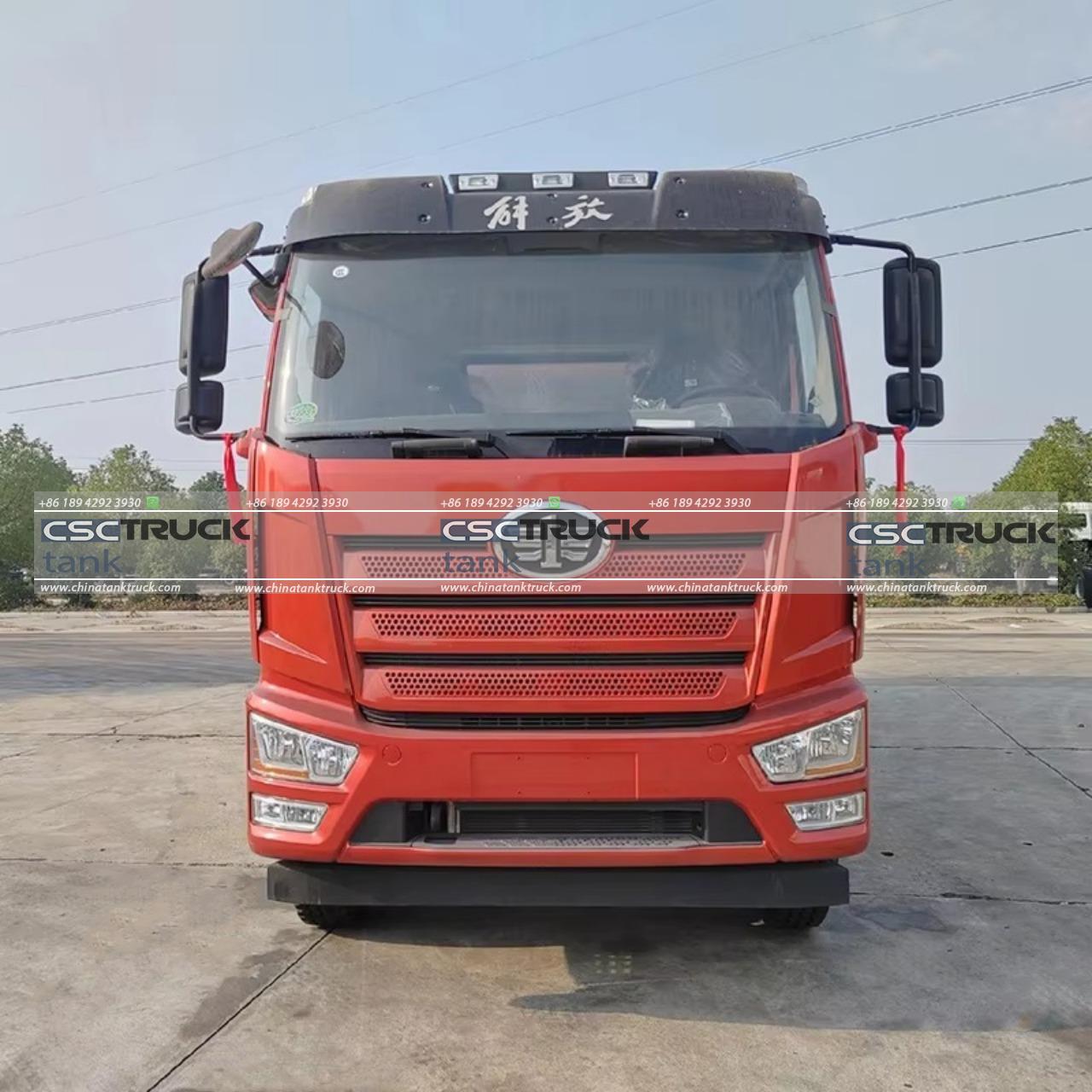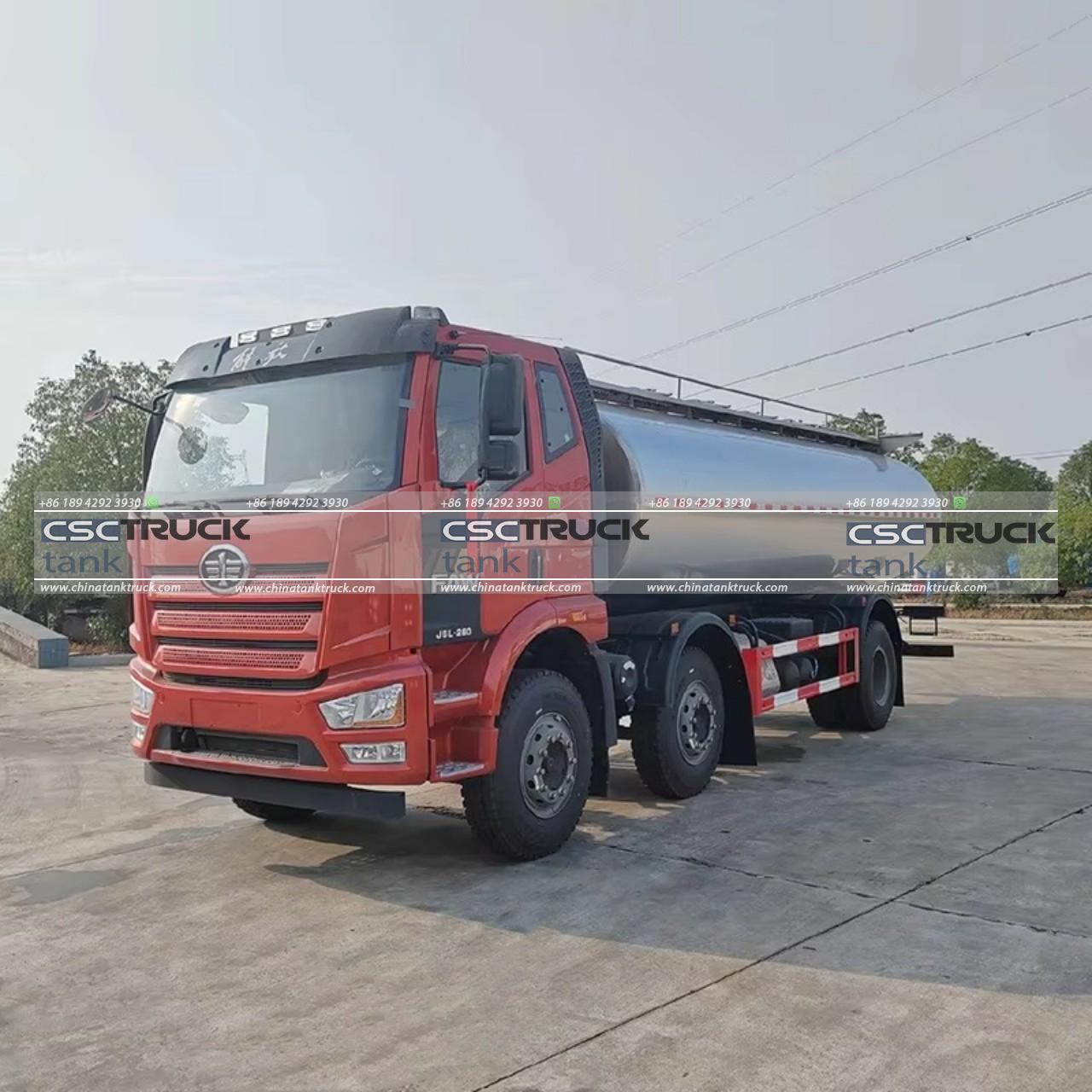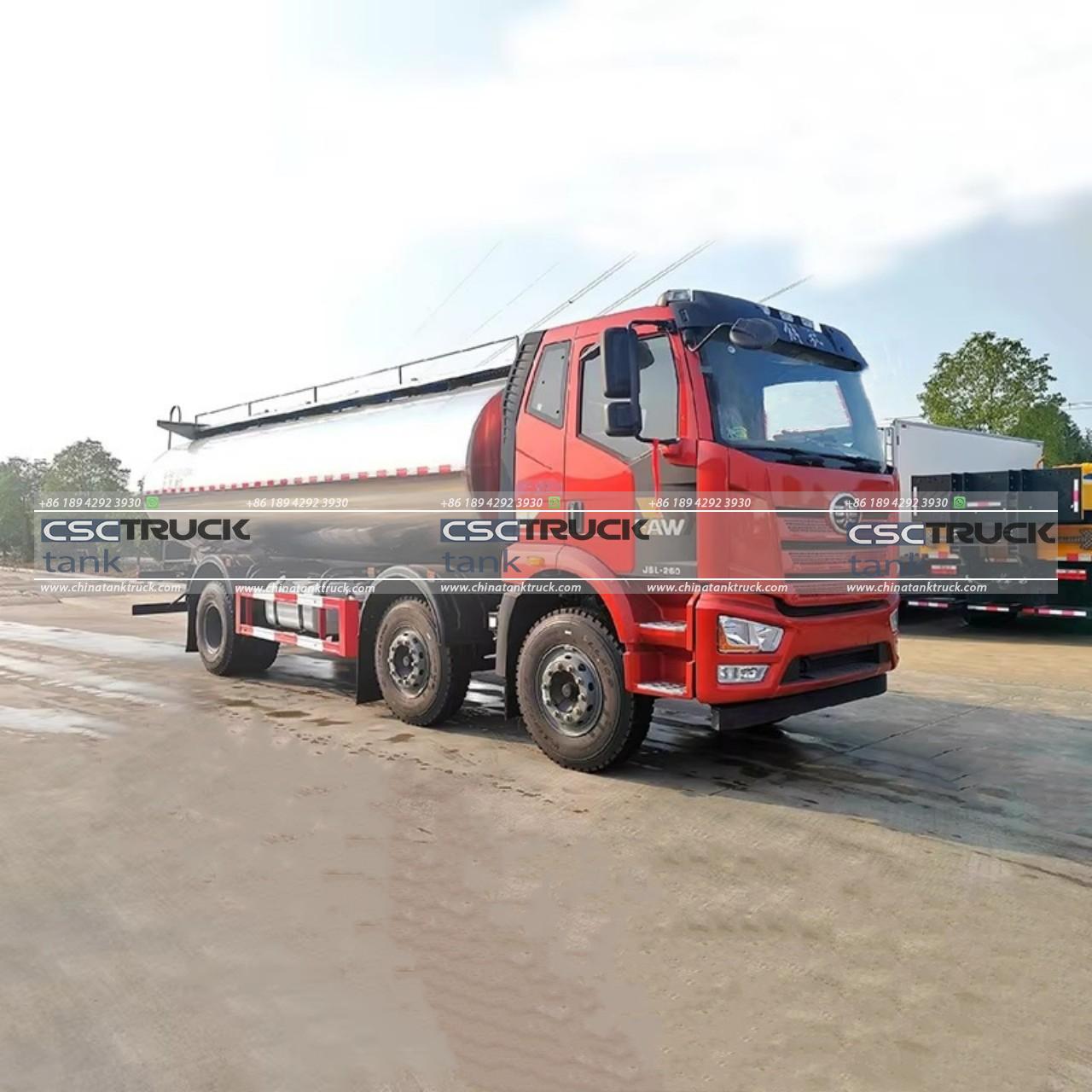What is the Capacity of a Milk Tanker?
Milk tankers, often seen transporting large volumes of fresh milk from farms to processing facilities, are a critical link in the dairy supply chain. These specialized vehicles play an essential role in maintaining the quality, safety, and freshness of milk by providing temperature-controlled storage. The capacity of a milk tanker can vary significantly depending on the type of tanker, its intended route, and the regulations in the regions it operates. This article will dive into the factors that influence the capacity of a milk tanker, the typical range of capacities, and why maintaining the right capacity is essential for efficiency and quality in the dairy industry.
1. Factors Influencing Milk Tanker Capacity
The capacity of a milk tanker can vary widely due to several factors:
– Design Specifications: Milk tankers are designed to maximize volume without exceeding weight restrictions. Different models can have various internal layouts, which directly influence how much milk they can carry.
– Weight Regulations: Different regions have specific legal weight limits for vehicles on public roads. In the United States, for example, federal regulations allow a maximum vehicle weight of 80,000 pounds (36,287 kg) on interstate highways. Tankers must balance volume capacity with the weight of the milk and the vehicle to comply with these limits.
– Road Conditions: In areas with narrow or unpaved roads, milk tankers may be built smaller to enhance maneuverability and avoid overloading. This can reduce the total milk volume that these vehicles are designed to carry.
– Single or Multi-Compartment Tanks: Some milk tankers have single, large compartments, while others have multiple compartments for transporting different batches of milk without mixing. Multi-compartment tanks may have a reduced overall capacity due to the walls dividing the compartments.
– Cooling and Insulation Requirements: Milk needs to be kept at around 4°C (39°F) to maintain freshness and prevent spoilage. The addition of insulation and refrigeration units reduces the amount of usable space in the tank.

2. Typical Capacities of Milk Tankers
Milk tanker capacities can range broadly depending on the tanker type and location. Here’s a look at common capacity ranges:
a) Small-Scale Milk Tankers
These milk tankers are generally smaller and operate in regions where large tankers cannot easily navigate, such as rural areas with limited road access or mountainous terrains. Small milk tankers typically have a capacity between:
– 2,000 to 6,000 gallons (7,570 to 22,712 liters)
These trucks are ideal for local pickups, collecting milk from smaller farms and transporting it to a nearby collection center or processing plant. Their smaller size makes them more versatile on narrow or challenging roads.
b) Medium-Sized Milk Tankers
Medium-sized tankers are commonly used for regional transport, bridging the gap between local collection and main processing facilities. These tankers generally have capacities ranging from:
– 6,000 to 10,000 gallons (22,712 to 37,850 liters)
This type of tanker is used in areas where farms are spread out but can still be accessed by medium-sized vehicles. They balance maneuverability with greater capacity, making them efficient for longer distances without needing the road access of larger milk tankers.
c) Large Milk Tankers
Large tankers are often used for long-haul transport between regional collection hubs and processing facilities. Built to maximize capacity within legal weight limits, large milk tankers can carry:
– 10,000 to 12,000 gallons (37,850 to 45,424 liters)
These tankers operate on well-maintained, major roads and are typically designed to reach maximum weight restrictions. They are optimized for large-scale transport, reducing the number of trips needed to deliver milk to processing centers and helping lower overall transport costs.
3. Practical Considerations for Capacity Optimization
The dairy industry has specific needs that drive the demand for efficient, high-capacity tankers. However, several additional practical considerations affect how milk tanker capacity is optimized:
a) Temperature Control and Freshness
Milk must be kept cool to prevent spoilage, and tankers are designed with insulation and sometimes refrigeration units to maintain a temperature around 4°C (39°F). Keeping the milk at this temperature is crucial, as any increase can lead to spoilage, bacterial growth, and deterioration of taste and quality. This means the tankers must have adequate insulation, even if it slightly reduces the internal capacity.
b) Hygiene Standards
Milk tankers are held to high cleanliness standards since any contamination can ruin large batches of milk. This means that after each delivery, tankers must be thoroughly cleaned, a process known as “CIP” (Clean-In-Place). This cleaning process requires tankers to be designed with easy access points, internal smooth surfaces, and sometimes spray balls that facilitate a complete rinse. While these features don’t directly impact capacity, they are crucial for maintaining quality and adding to the design complexity.
c) Weight-to-Volume Ratio
Milk weighs about 8.6 pounds per gallon (1.03 kg per liter). Thus, the weight of the milk itself must be carefully considered alongside the tanker’s weight, as it affects how much milk can be transported without surpassing legal weight limits. Large tankers are optimized to carry as much milk as possible without exceeding the weight threshold, as any overload can lead to fines or vehicle damage.
d) Compartmentalization
Some milk tankers are divided into multiple compartments, allowing the separation of different batches. While helpful, compartmentalization reduces overall capacity due to the walls separating the sections. However, it enables transport companies to consolidate trips and reduce travel time by collecting milk from multiple farms or distribution points without mixing different grades or types of milk.

4. Regulatory Compliance for Tanker Capacities
Milk tanker capacity is also subject to local and international regulations:
– Federal and State Regulations: In the U.S., the Federal Motor Carrier Safety Administration (FMCSA) sets standards for weight limits on public roads, but state-specific rules can apply. Other countries have similar governing bodies that monitor the size, weight, and safety requirements of milk tankers.
– Health and Safety Regulations: Regulatory agencies, such as the U.S. Food and Drug Administration (FDA), enforce strict hygiene requirements for milk tankers. These rules dictate how often tankers must be cleaned and the type of materials that can be used for the tanker’s inner lining.
Compliance with these rules often limits how much milk a tanker can legally carry, impacting capacity and efficiency.
5. Environmental and Efficiency Considerations
As the dairy industry becomes more environmentally conscious, transport companies are looking for ways to improve the efficiency of milk tankers. A few trends include:
– Fuel-Efficient Vehicles: New milk tankers are designed to reduce fuel consumption through aerodynamic designs and lighter materials, which help in transporting the same amount of milk with less fuel.
– Hybrid and Electric Milk Tankers: Although in the early stages, there is growing interest in hybrid and electric milk tankers, especially for smaller-scale operations. These tankers could potentially reduce emissions while maintaining the necessary capacity for local routes.
– Optimized Route Planning: GPS and software-based route optimization help maximize the capacity of each trip. These tools allow milk transporters to plan the most efficient routes, reducing overall mileage and environmental impact.

Conclusion
Milk tankers are vital for transporting fresh milk from farms to processing facilities. Their capacity can vary significantly based on factors like design specifications, weight regulations, and specific industry requirements. Small tankers range from 2,000 to 6,000 gallons, while large tankers can hold up to 12,000 gallons. Balancing volume with weight, ensuring temperature control, and adhering to hygiene standards are all essential for maintaining milk quality and safety.
As the dairy industry evolves, milk tanker design and technology will continue to innovate, focusing on maximizing capacity, improving efficiency, and reducing environmental impact. This ensures that consumers can rely on fresh, safe milk in their homes, all thanks to the sophisticated and carefully regulated transport provided by milk tankers.

